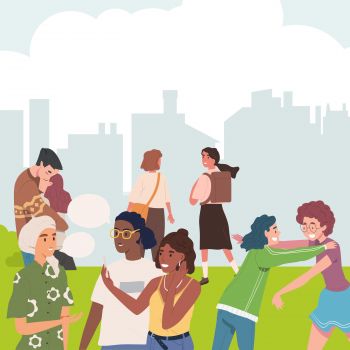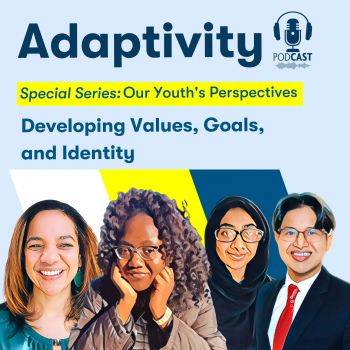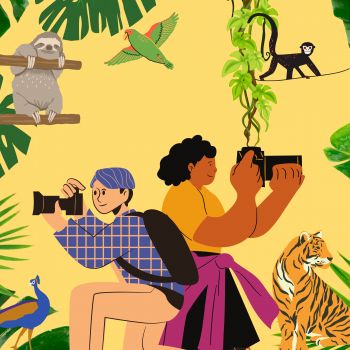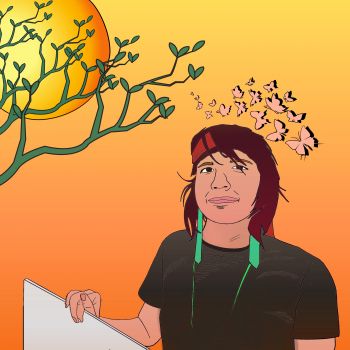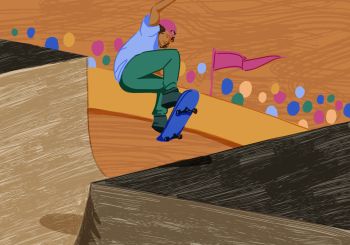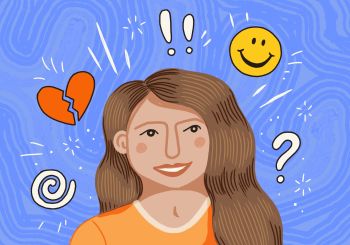Ron Dahl During adolescence we start to form a deeper, more enduring sense of self—Who am I? Where do I fit in? And, what messages am I getting about who I should be?
Noor Harwell I’m sort of a bookworm, I’m a bit introverted, but I do like public speaking and being outspoken and joining things—so like in school, I do things like student council and I love theater.
Ron Dahl We also become aware of the contexts, experiences, and values that underpin the feelings of “This is who I am” or “This is ME.”
Jara Wilensky I would describe myself as someone who really values education. It’s just been something that has always been very important in my life. And I really just love the STEM subjects; I’ve always been interested in STEM.
Ron Dahl It’s also a time when we become sensitive to messages and signals—spoken and unspoken—about how others perceive us. And that’s when race and gender and other aspects of our identity gain new importance.
Noor Harwell I knew I was Black, and I knew my family was Black, but I didn’t identify as Black until like fifth grade, sixth grade, middle school.
Ron Dahl And racism, bias, and discrimination come into stark relief.
Jara Wilensky That was one of the few times where someone explicitly said, “I think you’re just here because of your race, and I just see you as kind of a placeholder to make sure, we’re not accused of not having Black people in the class.”
Ron Dahl I’m Ron Dahl, Founding Director of the Center for the Developing Adolescent, and this is Adaptivity, where we explore the science of adolescence, untangling misconceptions about the years between childhood and adulthood. We explore new insights into the rapid cognitive, emotional, and social changes that happen during these years, and how the developing adolescent brain is primed to promote healthy and adaptive learning.
On this episode of Adaptivity, we’re talking about our sense of identity.
During adolescence, we begin to develop a more complex understanding of who we are, where we belong, and how other people see us. Issues of race and ethnicity become especially salient, as we integrate our growing sense of self with the messages we get from parents, teachers, other kids and the media.
Healthy development in adolescence involves creating a positive sense of self and belonging. And this process can be challenging for young people facing racism and other forms of bias and discrimination. How youth feel about their race and ethnicity is an important part of identity formation—positive racial and ethnic identity is associated with better psychosocial outcomes, like reduced depression and higher self-esteem… even improved academic performance and reduced health risks.
In this episode, we’re specifically looking at the experiences of Black girls and young women—and the kinds of messages Black girls might get from parents, teachers, other kids, the news—and how these messages can impact a developing sense of self and identity.
We’ll start by talking with 19-year-old Jara Wilensky and 14-year-old Noor Harwell, two brilliant young women at the Alberta V. Scott Leadership Academy, a mentorship program run by the Association of Black Harvard Women serving Black high school girls in the Greater Boston area. Then we’ll loop in Professor Joanna Lee Williams from Rutgers University to talk about the research behind how we form our individual and group identities from the middle school years on.
***
Jara Wilensky Hi, I’m Jara, I’m a freshman, or—I just finished my freshman year at Harvard and I’m planning to concentrate in physics on the biophysics track and I’m also premed.
Noor Harwell And my name is Noor, I’m a freshman at Brookline High School. My interest is in math. That’s my favorite subject and coding too, so I really like STEM. And I joined AVS this fall the, excuse me, sorry. Alberta Scott Leadership Academy, and Jara was my mentor.
Ron Dahl Thank you both so much for being here. This episode, we’re talking about how we form our sense of identity during adolescence. So maybe you can start by saying a bit about yourselves—whatever comes to mind in terms of how you would describe yourself to help someone get a sense of who you are.
Jara Wilensky Well, I would describe myself as somebody who really values education. and I really just love the STEM subjects. I’ve always just been interested in STEM. As I grew to like math, I grew to like the physical sciences more. And that’s kind of when I realized, you know, I actually really like physics. It’s something that has always come relatively easily to myself. And, I also tutor. I tutor almost exclusively Black students in STEM. I enjoy doing that because I enjoy being a support system and encouraging people. Because a lot of the times, they actually understand what’s going on, but they doubt themselves.
Noor Harwell I’m sort of a bookworm, I’m a bit introverted, but I really like what I do, like public speaking and being outspoken and joining things. So, like in school, I do things like student council and I love theater and really just being out and about. That’s sort of me. Also for things I do outside of school, for coding, I actually help teach this coding class of third-to-fifth graders through this program called GB STEM—Greater Boston STEM.
Ron Dahl Jara, how and when did you first become interested in physics?
Jara Wilensky In my middle school, sixth grade is when we learned physics, and I don’t know, immediately I just kind of like took to it. It just made sense to me. Then I started reading books about like particle physics, even though I didn’t really understand any of it because I was in middle school. But I just wanted to know so badly more about physics and then also kind of to impress people because everyone was like, oh, wow, particle physics, that’s crazy. Especially things like string theory. I just read about it, not really understand it, but I kind of just love to read about it. I thought it was super interesting.
Ron Dahl At some point, did it start to feel like it was just a part of who you were, not just something you liked?
Jara Wilensky I kind of realized it when I started organizing my entire high school schedule in middle school, just around the fact that I wanted to be able to take quantum mechanics my senior year, and so I had to plan out my entire schedule just so I could be able to take all the prerequisites to get up to that point. And that’s when I realized, like, this is like a large part of my life.
Ron Dahl And how about for you, Noor, when did you first become interested in math?
Noor Harwell I feel like I’ve been interested in math since forever; I couldn’t even say a time. I remember I used to write in notebooks extra problems for myself just in my free time, just so I could get better at multiplication, better at addition.
Ron Dahl What made you realize this was taking root more deeply in your identity?
Noor Harwell Maybe when I started middle school. My mom moved me from my public school to an all-girls school, actually half because I liked math and she really wanted me in middle school, not to be pushed down as a girl and not to lose interest in STEM. And so going to a whole new school, being surrounded by girls and like having female math teachers and just being surrounded by people who were excited, sort of further pushed my excitement. So. Right about middle school.
Ron Dahl How do people react when you talk about your passion for physics and math?
Jara Wilensky They’re always surprised, usually a little impressed, which is nice, flattering. I think sometimes it has to do with being a girl and then sometimes it has to do with being Black and even a Black girl.
Noor Harwell This year, our classes are split up into standard, honors and advanced, and I’m in an advanced class and people, their eyes always blow by when they hear that I’m in advanced geometry or like that I do math outside of school or like teaching coding, like people are just very surprised by that. It’s a bit of like frustration because, like people are underestimating you. I’ve had a lot of people in my class ask me if I understand really easy topics, or they kind of baby talk down to me when I ask a question. And that can be very frustrating.
Ron Dahl That sounds complicated to unpack—people’s surprise can be seen as positive, they’re impressed. But their surprise can also be seen as skepticism, which is negative. Have you received other negative messages from people about being Black young women pursuing STEM subjects?
Jara Wilensky One that immediately comes to mind, is in high school, I was taking an honors math class and I started to not do well, because I struggle with anxiety. And so I was really showing up on my exams, like I would do very well on the homework, do very well in class, but I just wasn’t doing well exams. And so I considered switching it to a different class just to help with my stress. And then also just because the teacher wasn’t very understanding and the teacher’s response to me was, ‘No, don’t switch. You’re the only Black girl in this class.’ And I mean, that shocked me just because it wasn’t, “No, you’ll get through this. No, you’re doing well. No, you actually understand just the exams class” or whatever. It’s you no, you’re the only Black girl. You got to fulfill the diversity quota we have. And that that would definitely upset me. I don’t think I really showed it at the time, but it definitely that’s something that really stuck with me, because that was one of the few times where someone explicitly said, “I think you’re just here because of your race, and that’s how I see you. I don’t see you as really contributing to the class. I just see you as kind of a placeholder to make sure we’re not accused of not having Black people in the class.” And I mean, I did well in that class because that lit a fire. And I was like, well now I’ve got to do really well, I’m not moving out of this class.
Ron Dahl Yeah, so rather than feeling recognized as a person with some anxieties and all your capabilities, you were just placed in this category and not being recognized, as a person, as an individual. Noor, what’s your experience been like?
Noor Harwell I’ve been fortunate enough to not have experienced too many microaggressions past people’s surprise, at least involving STEM, but definitely when I went to an all girls school, nobody ever said it to my face. But people sometimes make comments about, oh, you only got accepted because you were the Black student. Like I remember when as soon as we learned the term affirmative action, that was, people look at you and you feel like, am I only here because I’m doing this? Am I—are teachers like giving me extra help or pushing me to these other math classes only because I will be one of the few Black students there? So I think that’s what I’ve gotten mainly.
Ron Dahl Jara, what advice would you give to other students, particularly Black girls, who are experiencing these kinds of comments and assumptions?
Jara Wilensky I think my experience as a tutor really helps me answer this just because I do work with, like primarily Black students and pretty much exclusively Black students. And a lot of times I do see themselves start to doubt themselves. And that can also be frustrating to me because I see them like or I hear, they’ll like talk about, “oh, these other students are doing better than me, and the teacher pays attention to them more, and the teachers are always nicer to them.” But usually they actually understand the material and they can do it themselves, but they just lack confidence. So usually I just end up saying, you know, your teachers and your peers will see you as a Black student and many times they will doubt you and not want to make space for you. But sometimes you have to create your own space and you have to take up space in your classes. Don’t back down. Just because they look at you and don’t see someone who’s going to excel in STEM doesn’t mean that they’re right.
***
Ron Dahl We’ll hear more from Jara and Noor in a bit. But first, joining me to share her expertise on adolescent development is Joanna Lee Williams, Associate Professor in the School Psychology Program at Rutgers University. Professor Williams also co-directs the National Scientific Council on Adolescence at the Center for the Developing Adolescent. Her research focuses on the role of race and ethnicity in school and friendship networks; she also translates the science of adolescence into recommendations for parents, teachers and policymakers. Welcome, Joanna.
Joanna Lee Williams Thanks Ron, glad to be here.
Ron Dahl In a recent panel you were on, a Maya Angelou quote came up. Can you remind us of it?
Joanna Lee Williams Sure. So the quote reads, “You are the sum total of everything you’ve ever seen, heard, eaten, smelled, been told, forgot. It’s all there. Everything influences each of us. And because of that, I try to make sure that my experiences are positive.”
Ron Dahl Angelou’s quote is a great springboard to talking about identity. Forging a sense of identity—who we are, where we fit in, what we value—is an important developmental task of the adolescent years. Can you talk a little bit about this process, how we form our sense of identity during adolescence?
Joanna Lee Williams Yes, so let me start with adolescence as an important period for this kind of exploration. During adolescence, there’s a lot of really important and dynamic changes that are happening with young people. So those changes are happening, you know, biologically and physiologically. They’re also related to cognitive changes and changes in social relationships and emotions. Around the time of puberty, there are changes that happen that essentially heighten young people’s sensitivity to social information and social relationships. This is important for identity, because one of the ways that we kind of negotiate and make meaning of who we are is in relationships with other people.
So in early adolescence, there tends to be a heightened attunement to information from peers, and peers serve as an important reference group for, kind of bouncing off answers to questions like, “Who am I? You know, how do I fit in? Who do I see myself becoming?” Over the course of adolescence, beyond the early years, young people become increasingly able to think in abstract and complex ways. They are able to engage in self-reflection on a deeper level, which means having ways to create a deeper sense of, a sense of self around these questions related to identity.
Ron Dahl Some of your work has focused on early adolescence as a particularly important time in developing our sense of racial identity. Can you share some of your insights about this?
Joanna Lee Williams Sure, so I’ll start with just kind of basic developmental processes around, you know, what we know related to racial identity. It’s also similar for ethnic identity. I would say the the most simple developmental model suggests that young people move from a place where they’re not necessarily thinking so much about what it means to be a member of their racial group. They may have a particular label that they identify with, but they don’t necessarily start thinking about themselves in relation to that label. For many young people, they may have a particular experience, including, I think in relation to the Maya Angelou quote, experiences that evoke particular feelings, positive and or negative, that get them thinking about themselves in broader terms.
I think the manifestation of that, particularly for black youth in the United States, often they may find themselves being acutely aware of their racial group membership in response to, say, negative comments or negative experiences, so experiences that create or convey negative stereotypes about one’s abilities, expectations of certain kinds of behaviors, and that for many youth, begins to catalyze this this process of, oh, I need to you know, people are viewing me in these sort of racialized ways.
Ron Dahl It’s fascinating to me that developmental psychologists and people studying development in childhood and adolescence rarely talk about power. We emphasize this as a time where young people seek autonomy and agency, but it’s also about how young people finding a sense of their own power…
Joanna Lee Williams What’s important for an adolescent, as you’ve said, is having some agency in being able to say, this is who I am, this is what I value, and this is how I want to be seen, you know, on this particular day in time, because that can change, of course, over time. But the challenge, I think, for Black youth in particular and other youth from historically stigmatized groups is that oftentimes they are being defined by others in ways that are grounded in stereotypes, often negative stereotypes.
So this idea that somebody else is defining who I am doesn’t align well with what we know about the need for exploration and agency and self-definition and can be really disempowering for young people to be in a setting where, you know, say, in schools, my teacher already has preconceived notions of who I might be because of this one aspect of my identity.
I will say, though, that despite what we know about the prevalence of implicit and explicit bias of racial discrimination at an interpersonal level and racism at a structural level it’s hard to overlook that there is great resilience in Black communities across the country, especially among adolescents around identity development and having a sense of pride, I think there’s a resurgence in this concept of Black joy, which is about despite all of the things that may be going on in our country, I still can look to my people as a source of joy. And I think having those messages being prevalent for young people to have access to can also tremendously benefit them in terms of racial identity development.
Ron Dahl Joanna, how did you, personally, experience this process of racial identity development?
Joanna Lee Williams So as I think about my own identity, I identify both as Black and as biracial in terms of my racial identity. I was raised by a White mother and a Black father and didn’t have the language in childhood. You know, I use the term biracial now as one of my terms. “Mixed” was the term that we used as kids, and it was sort of like generally understood that being mixed was just another way of being Black. I have a very vivid memory of an experience that I had in middle school in sixth grade. I attended a school in northern New Jersey that was somewhat diverse, but really comprised of two groups. So about I would say, 30 or so percent of students identified as Black and maybe 60 or so percent of students identified as white.
And, I had been in social studies class with my two best friends, one identified as white. Her parents were from England and she was Mormon, the other identified as Black—her parents were from Guyana. And so the three of us, this little multiracial group, were really close. And we had a great time in this class. Midway through the year, they decided for whatever reason to restructure. And I found myself in a class with kids that I knew but wasn’t friends with at all. I remember it was when we had sort of open opportunities to choose our own seating. I found that really challenging, because there was a small group of Black students in the class. So I again known since elementary school; there was a larger group of white students who I knew I wasn’t really close friends with either group. But I remember one day sort of I was sitting closer to the white students.
And one of my Black peers came up and was like, “Why are you sitting here? Are you Black? Or, are you white?” And that question just sort of throws me in my tracks, in part because I had known the student since kindergarten, like he knew my family and so did a lot. Like the rational part of me was like, well, you know that, you know, my mom’s white, you know, but I didn’t really have the language to kind of articulate would the embarrassment that I felt and the shock that I felt at that question. And so I don’t know what I said in the moment, but I do know that the very next day in that class, I made the decision to sit with my Black peers, and then for the rest of the school year, felt like I had to make this decision.
And now in my academic life, I’ve read work by Prudence Carter, who’s a sociologist, and she studied, you know, educational settings. And she uses a term called Cultural Status Positioning. … a lot of her ethnographic work has focused on Black and Latinx adolescents, and she talks about within the Black community this idea of engaging in these kinds of questions around authenticity that are really about, you know, sort of figuring out the boundaries of like who gets included, who’s sort of defined in ways that young people feel is authentic and that I understand it as part of developing identities….and that question, really from this peer of mine came from that space. I don’t know what; I’ve never asked him his intention behind that question; I just know how it made me feel.
For me, it was, you know, like race became very suddenly salient. And for probably the rest of middle school on some level, sixth through eighth grade, I was always very conscious of who I was surrounding myself with and what it meant for me to be defined by who I was sitting with. And that’s common in middle school, that our identities in some ways are defined by our peer groups.
Ron Dahl Thank you so much for sharing that story. It’s such a clear example of how racial identity becomes so salient in the middle school years. Let’s return to our conversation with Jara and Noor, and then you and I can talk some more.
I asked them to reflect on their own developmental journey in terms of their racial, ethnic and cultural identity. I wondered if there were important events—like yours having to choose where to sit in the classroom, Joanna—or people who were influential to them. Jara answered first, then Noor:
Jara Wilensky I think the biggest jump I made to who I am now was in high school because before then I had been just kind of always in white spaces, like I was in a group of majority Black people very few times. I mean, usually like family or church. And because I was also kind of a gymnast, I didn’t go to church as often just because I would have practices all the time. Then gymnastics was a white space. I did competitive horseback riding. That’s a white space as well. My school—I went to a private school in D.C., majority white as well. So they’re kind of very few spaces until high school when the number of Black people in my grade increased. And I met this girl named Zia Holman, who became one of my very good friends, who was just I remember her just being like unapologetically Black. And I was like, wow, like that is so inspiring because I always think people kind of like, not toning down their Blackness, but trying to be a little bit trying to like I guess it almost seemed like they were trying to make white people more comfortable, especially at school versus I mean, she just didn’t care. It was great. Like she was just herself. And I was just so amazed by that.
Noor Harwell For me, it was like from like beginning with like fourth grade, I knew I was Black and I knew my family was Black, but I didn’t identify as Black until like fifth grade, sixth grade, middle school. And it really started with my first Black teacher, my fifth-grade teacher, Ms. Nick, and she was just really great. Like she recognized that I was Black and she really saw me and had allyship with me. And she introduced me to this thing called an affinity space, which I’d never heard of before. And so I joined that. And we just had discussions every Friday during lunch. We just talked about all sorts of things. And I think what was most valuable for me from that experience was having words to describe, like what was happening to me, like words like “microaggression” and words like “implicit bias.” I finally say, Oh, and like, look back on my life and see, that’s what’s happening, like, now I can tell people and like, ask for help or like, let someone know what’s happening to me. So that was the moment I really started to claim me being Black as something. Yeah.
Ron Dahl That’s fascinating, so that affinity group experience was giving you words and concepts, but also feelings, can you say more about that?
Noor Harwell Yeah, it gave me a space where I saw people who had gone through the same things as me. I think a prominent thing that always comes up with a lot of Black women is hair—people touching your hair, putting their hands in your hair. And because I’ve been one of the only Black students in my class and my grades, I never heard from anybody else who had that same experience. But here were like 10, 15 other girls who were saying the exact same thing. So I think I felt a sense of camaraderie and a sense of belonging, really.
Jara Wilensky It’s one thing to be a woman and it’s another thing to be a Black person, but being a Black woman is an entirely different experience. And so being able to be in a space with other Black women is usually like one of the few times where I can let my guard down the other time being with family and close friends.
Ron Dahl Joanna, what do you think about what Jara and Noor shared and about affinity group experiences?
Joanna Lee Williams I think we’re hearing very normative experiences from these two young women about, you know, it being sort of middle school and high school when they started really thinking about themselves in terms of being Black and being Black women in ways that went beyond just being able to like to use a label. They were starting to think about what that meant and really integrating it into a sense of, you know, this is this is part of who I am as a person. And I think that we see the importance of context, we hear the importance of context, in their stories.
So for Noor, having a space facilitated by a teacher, this intentional affinity space where she and other Black girls could talk. And I imagine that those conversations, again, didn’t necessarily have to be about race. But when you bring Black girls together and the intersection of race and gender comes up and they can have these “aha” moments where they feel like, oh, you know, I’m not the only one, then, you know, I think young people begin to get a sense of their identity in terms of the balance between who I am as a person and who I am as a part of a collective, larger collective.
So Jara talked about feeling sort of most herself when she’s in spaces, affinity spaces with other Black women, she can sort of let her guard down and not have to pretend or anything like that. So, I think all of those are really aligned with what we know about identity development happening in relationships, about the importance of context. The fluid and dynamic nature of identity means that as we move from space to space, even throughout the same day, different aspects of ourselves and our identity may be salient at different points in time. Both of these young women talk about being Black and being women as being important parts of who they are. When you’re able to be in a context where there’s just a lot of congruence between how you see yourself and these important and central aspects of your identity. The importance of context—meeting them in particular moments of development—stood out to me as being really critical.
Ron Dahl To expand on this idea of relationships and contexts, let’s hear more about the Alberta V. Scott Leadership Academy at Harvard, or AVS, where Jara is a mentor, and Noor is her mentee.
Jara Wilensky My job is to check in on Noor every once in a while. Just make sure she’s doing OK. And then also attend the Zoom meetings with the rest of the people in AVS every Saturday. And, of course, Noor is there as well. And we will discuss a little bit of Black history, some current events, and then there is a book club, So that usually will have to do with experiences as a Black woman. A lot of times they’re little vignettes about like a long novel that’s just like consists of the whole time. So we can usually just like read a chapter and then we’re going to break out and discuss it. And usually being a Black woman in STEM does tend to come up just because if you’re talking about being marginalized, then that’s definitely one of the spaces where that would happen.
Noor Harwell I think for me, the mentee program, mentorship program has been so cool just to see Black women in college off and doing things and not that I haven’t seen that, but getting to talk to them and they’re very real. Like, when I look down the line and think about STEM, I often think about what I hear about all the hardships you face and how you’re going to be the only Black person in the room with all these things that are going to happen to you. And it sounds like really sad and really awful. And then I get to see these people every Saturday who are going up against that, and they’re still going about their day smiling, laughing, having fun. So for me, definitely that I’m going to say I talked about before having a space where it’s almost unfiltered in a sense, where people could just talk about how they feel, how their week went, what may have happened if it has to do with race being Black or even if it doesn’t, just a space to kind of be free.
Ron Dahl It’s really interesting to hear how important being in an unfiltered space is for Noor—the mentorship program gives her a place to be free…
Joanna Lee Williams So I loved hearing all of that. I think some of the things that I really appreciated about the way the program is structured and also how it was how it was being received was that there was some intentionality around acknowledging race and acknowledging, you know, sort of racism and bias. But there was also a celebration of cultural pride and history. And when we think about identity development during adolescence, race is for youth, particularly for youth of color, race is one of many aspects of identity. And so I heard Noor talking about, you know, sometimes we can you know, we sort of talk about things that are related to race and being a Black woman in STEM. But sometimes we just talk about other stuff and talk about our day. So I think identity is comprised of how we see ourselves in terms of our individual identity, who we think we are as an individual person that is unique from other people. And that’s also sort of wrapped and intertwined with how we see ourselves in terms of race and gender. So the way the program was structured, it allowed for addressing kind of the multiple dimensions of who the the young mentee women were.
Joanna Lee Williams The other piece that is really important that both Jara and Noor acknowledged was being able to see, you know, women who have had these experiences. So understanding that if I have a vision of my future self as being a woman in STEM, it may be easier to kind of make that more concrete, if I actually can have relationships with women who are a few years ahead of me and who are doing this. So, I think there is a lot of value in this kind of mentoring program for being able to see that ‘this person is just a few years ahead of where I am now, but I see their experience, and I can envision myself having this kind of experience, too.’
Ron Dahl Yes, and I think one other aspect you allude to in that exchange, Joanna, is the weaving together of the challenges, but also the positive—the fun—aspects of daily life, even in the face of the particular kinds of challenges that are coming up.
Joanna Lee Williams Absolutely. Absolutely. I think really, you know, our identities never developed in a vacuum. They’re essentially almost always done in relational contexts. But, you know, we gain and develop and recast our sense of ourselves in relation to images that we see, conversations we have, things that we watch on television or a YouTube video, things that we hear, messages that we receive, say, um, say in classrooms and things like that. But I think the relational experience is an important part of identity development. And I think you pointed out a really key piece that the women who are serving as mentors were full humans. They might have been spotlighting at times particular aspects of their identities as Black women in STEM, but they were also portraying their full selves, allowing the young women to also do the same. So I think that’s really important, including all of the, the strengths and the joy that comes in in that experience.
Ron Dahl And of course, another aspect of identity we haven’t mentioned in this context is gender, being female and in STEM. Because these dimensions of identity can also be challenging and also create opportunities to connect. Are there other gender-specific aspects that would be different, or do you think they’re actually quite similar in many ways to the racial aspects of identity and ethnicity?
Joanna Lee Williams Yeah, that’s a good question. I mean, I imagine the way that gender and race operates, there are, when we’re talking about identity, we might draw out some core principles around young people want to be seen and understood and respected for who they are and how they define themselves. In the context of this particular program, you have the intersection of race and gender being made explicit. We can’t necessarily tease apart different components of identity. And we have to recognize that, for instance, being Black and also identifying as female may create a different sense of identity than somebody who identifies as Black and male, you know, say CIS gender, male or Black and transgender, male or female. So the intersection of those categories can make for unique experiences and unique ways in which we’re received in the world.
I still think there are ways in which you can, you know, sometimes talk about race and the collective history of African Americans, in this case, you can sometimes talk about gender and collective experiences of women, and/or women in STEM. But I think what’s great about this particular program is you have Black women who are in STEM. So they are in, you know, drawing from their lived experience of what it’s like to be somebody who identifies with multiple identities in this particular space. But the core principles of making room for these conversations and seeing youth for their full humanity, I think would be important regardless.
Ron Dahl We talk about intersectionality with ease nowadays, but it wasn’t always easy to have multiple identities—like being Black and female—in the worlds of science and math. I asked Jara and Noor if they think it’s any easier for them today than, say, 10 or 20 or 30 years ago…
Jara Wilensky It’s definitely easier; a lot of the barriers have already been kind of torn down by the people who have come before me and also there are just more mentors. And that’s something that you see a lot of, especially white men have. There’s always someone to kind of support them. They tend to have like a much wider network, versus now we’re kind of starting to build that network for Black women in STEM. And, you know, that’s something new. And that makes my experience very different from the experiences of Black women who were starting out in STEM like alone, or not entirely alone, but the network was much smaller.
Noor Harwell Definitely easier, also like mainstream media just a couple of days ago in math class we were watching “Hidden Figures” and movies like that, and like books about maybe kids of color, Black girls who are interested in math and. Definitely, like, you know, it’s possible because you’ve seen other people do it versus, I can imagine 30 years ago, maybe you’re the first one to do it. So I appreciate not being one of the first.
Ron Dahl And what about looking forward—over the next 10 or 20 years? Are you hopeful?
Jara Wilensky I’d like to expand the network even further just you know make sure that everyone who wants to be in STEM can be in STEM, like just making sure, like if someone is super passionate and has so much potential and a feel that they’re not held back because they’re a woman or because of their race. I mean, think of all the advancements and all the progress we could have if gender and race weren’t a factor in the opportunities that people have.
Noor Harwell Definitely finding each other and helping each other and then, as you said, for the future, definitely building networks and giving more media presence so people don’t go, oh, I will be the Black girl who likes math, the Black girl who likes STEM, I’ll be the kid who likes STEM.
***
Joanna Lee Williams Yeah, I love that—“the kid who likes STEM.” I think that, I mean, that really encapsulates a lot of this. What I heard from Jara and Noor made me think about the importance of going beyond just sort of role models where there’s just a few people that you can look to but really thinking more about critical mass so that there’s enough Black women in STEM so that it’s not seen as unusual or exceptional in some way and it’s normalized as a career pathway for Black girls. You know, that this is something that Black girls and Black women do.
STEM is I mean, we’re talking about a tough career field and it’s important for young Black women to understand that, you know, nobody gets there kind of on their own. And I think stereotype and identity threat can also make it difficult to feel like I can actually ask for help or I can be part of, like, say, a study group or something like that. But the more opportunities you have to hear from other women and the ways in which their journey has worked and the support they’ve gotten along the way, I think that can help with kind of minimizing some of those stereotype threats and identity threats that may come with being a Black woman in the STEM field.
Ron Dahl Joanna, I want to ask you to now reflect a bit on the developmental science lens you bring. That is, not only on how we should address these issues broadly in society, but also why it is important to take extra care in thinking about girls and young women at this particular time in their lives and development. As adults, we have an important opportunity to try to create more of these positive supports and influences.
Joanna Lee Williams Yeah. So I think, you know, we heard from Jara and Noor some really good examples of things that have helped them. And I think we know from the literature that these are beneficial. So mentoring programs and affinity spaces, when done well, can be really affirming spaces that help young people, young Black girls and other young adolescents feel affirmed in who they are and who they may want to become in that moment. We heard in one of the young women’s experiences that she found it helpful just to get some vocabulary and language to put to the experiences that she had. When somebody says ‘no, that’s actually that’s a real thing. I’m validating your experience and I can give you a term that you can use to label that. I think that that is something that can be helpful as we think about particular aspects of identity development.
But, I think giving young people opportunities to be able to, you know, show and express that their identities are still in flux and still in development and that they can, you know, don’t necessarily have to be narrowed down to one particular aspect of identity.
Just because a kid sees themself, you know, halfway through 6th grade, halfway through 7th grade, they may have started to explore themself in other ways, and a few years later, that’s going to just deepen. So creating opportunities for depth of exploration and for growth, creating access to images and messages that affirm and support pride in one’s racial and or gender or other identities, I think is really important, too. So, never at any point our kids feeling ashamed of expressing a particular identity. I think part of that also involves adults educating themselves about the rich, diverse ways in which Black people might express themselves and realizing there’s no one single way to be Black or to, you know, express your Blackness or interpret what Blackness means. I think that takes being in relationships with, you know, people who are Black, for example, to get a sense of the rich, the richness of our cultural heritage. You know, the same goes for when we’re talking about gender and other identities as well. We have singular labels, but those labels stand for so many things. And so understanding that each individual child may center their race in their gender as important to them, they’re still going to have unique and individual ways of expressing those identities.
Ron Dahl Thank you, Joanna. Those are wise and important suggestions.
I asked Jara if she could shine a light on some ways to improve support and understanding for people who are not walking in her shoes…
Jara Wilensky I wasn’t really suggesting anything, but I would ask a couple of questions, and that would be, have you ever been in a space where your race is the minority or your gender is the minority, or both? And how did that make you feel? Did someone and then has someone ever doubted you? Because you because you’re of a certain race or a certain gender? And then finally, would you be OK with would you be OK if one day you woke up and you were a Black woman and you wanted to continue in STEM, would you be OK with that? And I think a lot of the times people would say, no, I wouldn’t want that. And they may not admit it, but, you know, in the back of their, back of their mind would be like they kind of, that’s not something they would want. And that kind of helps you realize if you just think about why that is. Then you start to realize what other people experience and how your race and gender are actually affecting your experience.
Joanna Lee Williams Wow, I think, you know, we just heard some brilliant questions that really framed out the importance of these issues around identity and identity in context. And, you know, I think that those questions are really compelling and really telling. And it gives me pause to think about in STEM and beyond. The fact that those questions are still quite poignant and quite relevant means that, you know, there’s there’s a lot of work to do.
I think, for me, when I think about identity as a as a Black girl or Black woman, ideally we can you know, the first thing that comes to mind is sort of pride and joy. It started out and circulated as a hashtag, but the phrase of “Black girl magic,” all of those things, I think are the kinds of feelings that anybody would want to evoke when they’re thinking about the identities that are important to them. And so I think we need to find ways to continue instilling that in young Black girls and women, but then also recognizing that the thing that needs to change are the settings and the structures and the contexts.
These young Black women, as we heard, are doing really well. They really are grounded in their sense of who they are, as Black women and as scientists, too. I think, you know, not underestimating the importance of identifying as a scientist, if STEM is your field, is really important. So they’re really grounded in their identities. And I think this sort of speaks to the idea that there are aspects of, you know, individual settings as well as, you know, larger structural contexts that that need to shift in order for us to have true congruence between one sense of oneself as a Black woman in STEM and, you know, being in the spaces in which you are doing your work or being educated.
Ron Dahl Joanna, thank you so much for such a remarkable breadth and depth of expertise and wisdom, helping us to understand these really, really important issues.
Joanna Lee Williams It was my pleasure. Thank you so much.
Ron Dahl I also want to extend my heartfelt gratitude to Jara Wilensky and Noor Harwell for sharing so many valuable thoughts and insights.
***
So we’ve heard from three exceptional women about developing passions, goals, and identity—particularly racial and ethnic identity—during the adolescent years.
As Joanna explained, part of the opportunity for this sort of discovery comes from the cognitive changes that give us new capacities to think and reflect in more complex ways about our experiences. Equally important are the emotional changes that occur during adolescence—including our increasing sensitivity to social feedback and strong motivation to feel socially valued, admired, and respected—particularly by the people we value, admire, and respect.
And how these cognitive and emotional changes combine to make the middle- and high-school years an important period to make sense of racial identity.
As adults, we can help young people as they form their sense of identity by creating opportunities for exploration and growth and providing messages that affirm and support youths’ racial or gender or other identities.
We also need to allow room for young people to define for themselves who they are, and to recognize that there’s no single way to be a young person of color or to follow a particular passion in STEM, math, and physics.
When we support youth to develop a positive sense of identity, we help them thrive as individuals who can bring their knowledge, talents, skills, and ideas, not only for their own development, but to contribute to tackling the complex challenges of our world.
I’m Ron Dahl, thanks for joining us on Adaptivity.
Our podcast is recorded primarily at UC Berkeley. Our senior producer is Polly Stryker. Our producer is Meghan Lynch Forder. Our engineer is Rob Speight. Adaptivity is a co-production of UC Berkeley and the UCLA Center for the Developing Adolescent.
************
This episode of Adaptivity features the following songs:
- “The Offensive Line” by Alex Gross
- “Calling” (Instrumental) by Dexter Britain
- “Interest” by Ketsa
- “Buffering” by Tiny Music for Tiny Robots
All available under a Creative Commons Attribution-Noncommercial license.

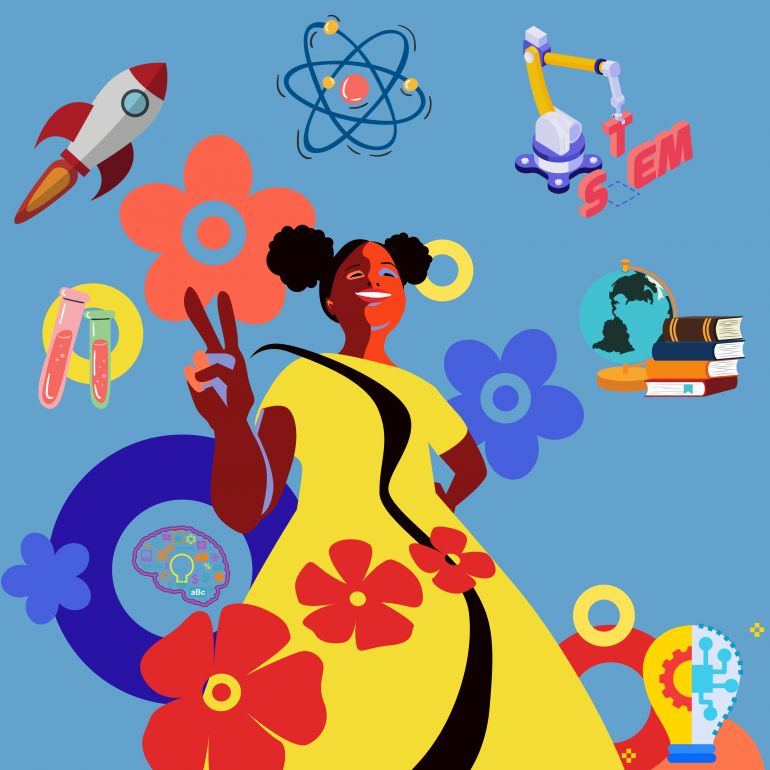
_350_350_80_c1.jpg)
_350_350_80_c1.jpg)
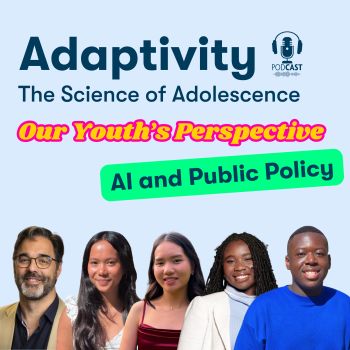
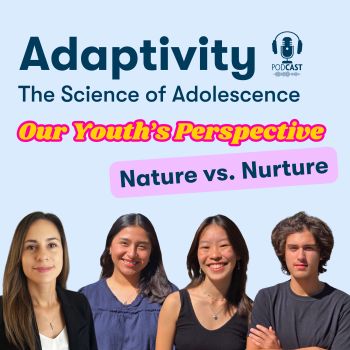
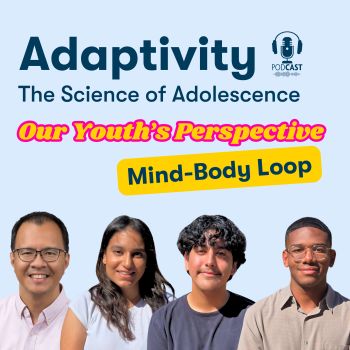

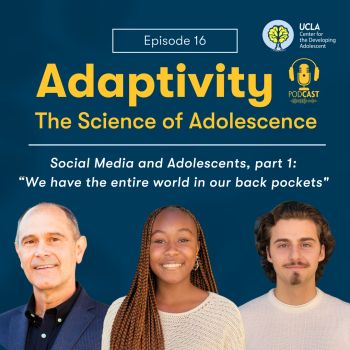
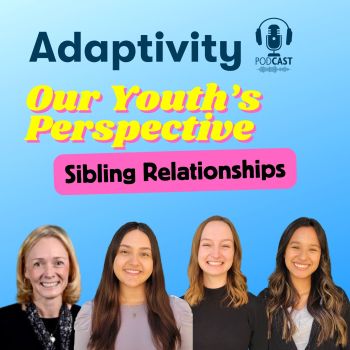
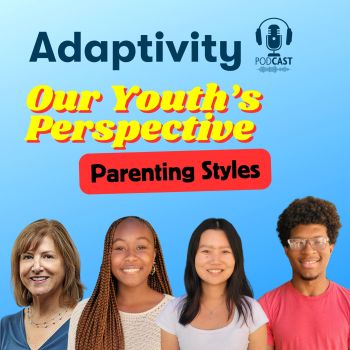
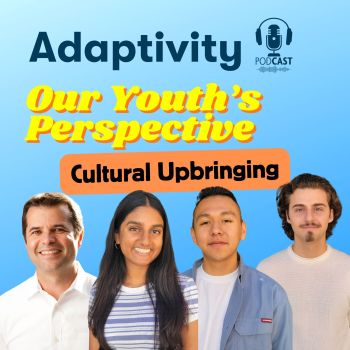
_350_350_80_c1.jpg)
